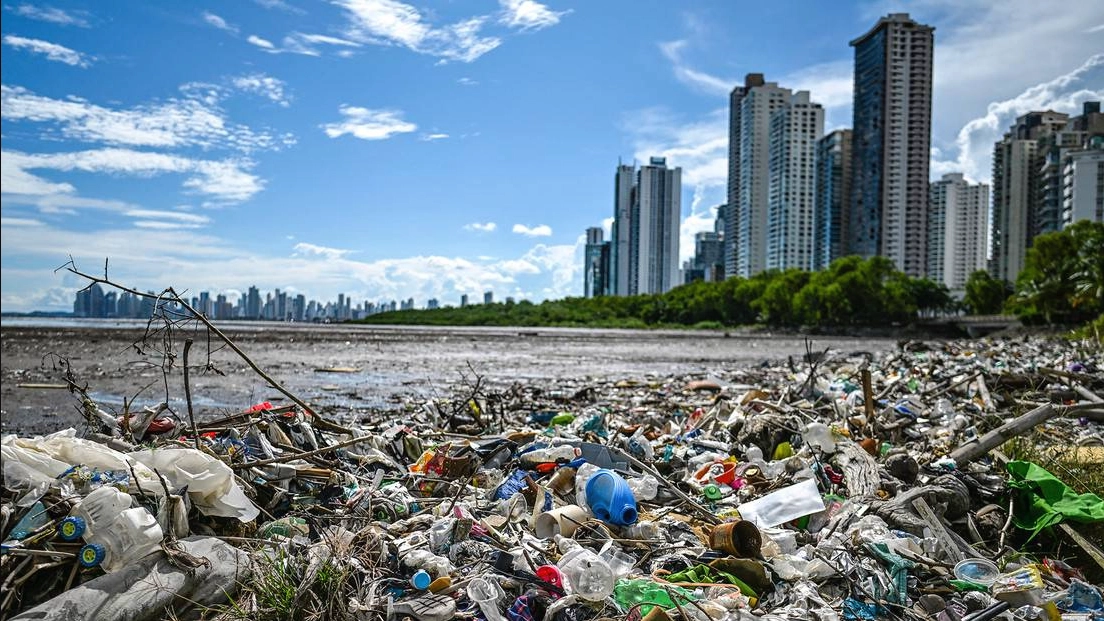More than half of the world’s population lives in urban areas and the proportion is increasing. Cities consume 75% of energy, 60% of residential water use, and generate 80% of global greenhouse gas (GHG) emissions. In addition, cities promote lifestyles that produce thousands of tons of waste per day, causing major impacts on ecosystems with very diverse social, economic, health, and ecological consequences.
The rate of waste generation is exponential, multifactorial, and varies according to the level of industrialization of each region. Moreover, much of the waste we produce is synthetic, resistant to degradation and potentially polluting. We also generate large volumes of waste that, although of organic origins, such as paper, cardboard, and plastics, do not degrade easily because they require certain environmental conditions and, in some cases, a long time. For example, a plastic bottle takes hundreds of years to degrade.
A significant fraction of this waste originates in households, causing one of the main urban environmental concerns. Some data suggest that each person, at least in Latin America and the Caribbean, produces around 1 kg of waste per day, although there are countries that exceed this figure. These are thousands of tons per day and to address the problems that generate so much waste, more is needed to simply improve the cleaning and management systems of cities. Still, it is necessary to build new ways of relating to objects. It is important to question consumption patterns, production processes, and what is done with what is no longer needed.
Why is so much waste generated?
A critical look at why so much waste is generated reveals the deep interconnection between urban life, consumption patterns, productive processes, capitalist economic models, technological development, public policies, and certain educational, cultural, and gender aspects. The linear and highly technological economic models developed by the consumer society favor the intensification of material extraction, artifact production, marketing, consumption, and rapid discarding.
To reverse the world economic crises of the early 20th century, strategies such as planned obsolescence were devised, setting up a culture of discarding and immediacy. Planned obsolescence consists of intentionally reducing the useful life, design, or quality of products and deploying commercial strategies to get people to buy new items permanently. In short, companies purposely design objects whose useful life is short and whose repair is not very accessible or attractive. At the same time, advertising promotes mechanisms to make it more rewarding to buy new items.
The scarcity of educational programs that promote more conscious behavior and contribute to making more ethical and fairer decisions also influences waste generation. In the region, environmental education strategies and policies are generally weak, fragmented and generally not oriented toward social transformation processes. There are few actions aimed at developing a critical and comprehensive awareness of the impacts of the predominant consumption model. This aspect is reflected in the decisions made, both at the individual and collective levels, which favors the development of a society of uncritical and uncommitted consumers.
Solid urban waste and greenhouse gas emissions
Part of the GHG generated globally comes from household waste. All compostable wet materials such as food waste as well as paper, cardboard, and petroleum-derived materials such as plastic can emit GHGs if they are not properly treated. On the other hand, the incineration of waste under uncontrolled conditions and generating toxic gases also increases the concentration of GHGs.
Wet degradable waste represents almost half of household waste. Their decomposition in the absence of oxygen generates biogas, which consists mainly of methane, one of the gases that contribute most to climate change. Some types of paper and cardboard are also degradable under certain conditions. However, these are usually considered dry recyclable materials, an important fraction of household waste that can exceed 35%, and include plastics, paper, cardboard, Tetra Brick, glass, and metals.
The most common plastics emit trace amounts of methane and ethylene when exposed to sunlight. It is estimated that approximately 79% of all plastic waste produced globally as of 2015 is in disposal sites, dispersed in ecosystems, or floating on “garbage islands” in the Pacific Ocean. Every year, 11 million tons of plastic waste enter the ocean, half of which corresponds to short-lived or single-use packaging.
In turn, the increase in GHGs produces diverse impacts at a global level, such as the loss of glaciers, rising sea levels, imbalances in weather patterns, an increase in tropical diseases or those linked to extreme weather situations, loss of biodiversity and fertile soil, among other impacts. All this brings with it a wide range of negative consequences linked to lifestyles, the economy, and people’s health.
How do we change this reality?
The complexity and interconnection of different factors that favor the production and mismanagement of waste require a critical, collective, and transdisciplinary approach. The starting point is to question and reduce its generation. It is necessary to question the production and consumption models, the production of disposable materials, especially plastics, and to promote new forms of consumption, and alternatives to the capitalist model. A second important action is to adequately treat the fraction of the composting waste.
From the perspective of integrated waste management, it is essential to consider the heterogeneity of the territories and their needs, as well as to promote participatory processes aimed at the development of critical thinking and the collective construction of new values. For example, creating community compost bins can be relevant as a critical management and education process, thus contributing to reducing GHG generated by household waste.
Another relevant aspect is the implementation of policies aimed at problematizing current consumption practices. Some countries have adopted “Zero Waste” strategies, a proposal based on the idea of not generating waste. This promotes changes in consumption, repair and recycling, and redesign of products and services, among others. This entails great challenges when it comes to promoting environmental communication actions, transforming the “use and throw away” culture, and understanding ecosystem processes, as well as reorienting production processes.
*Translated by Janaína Ruviaro da Silva from the original in Spanish.












